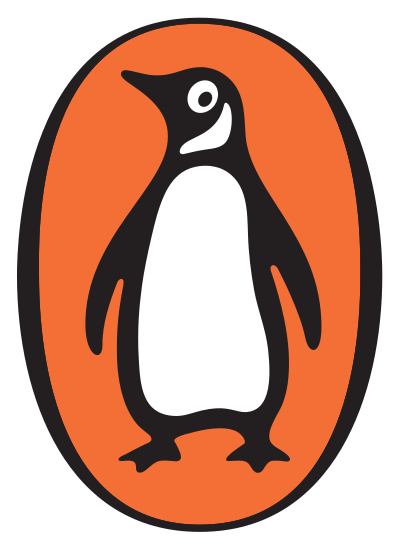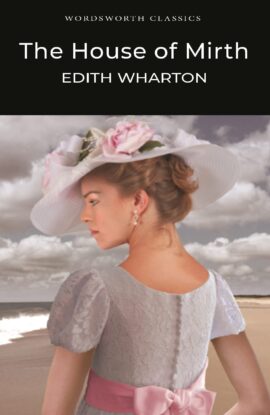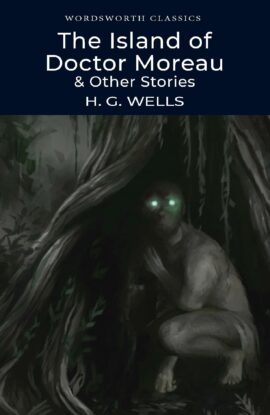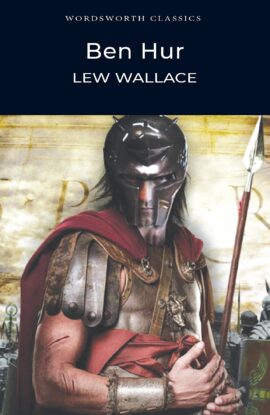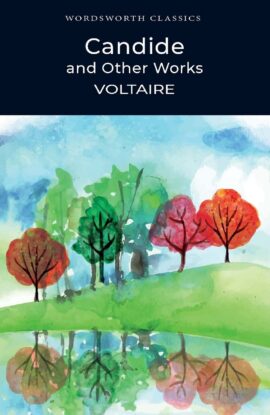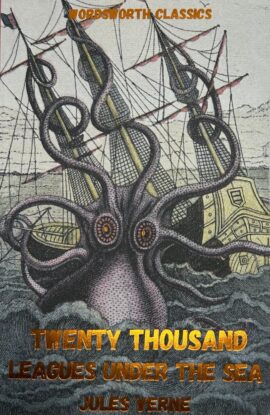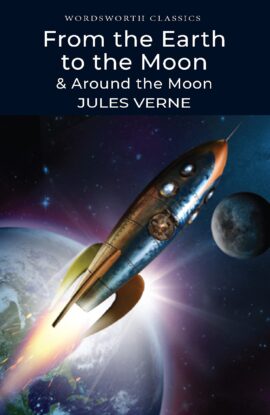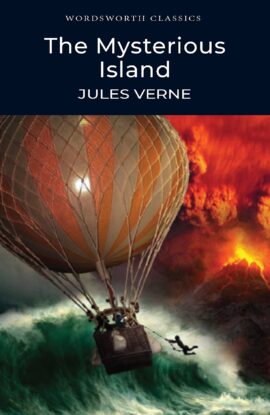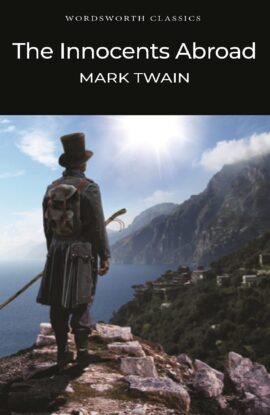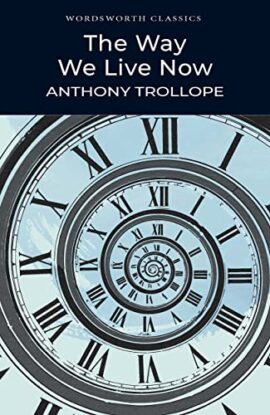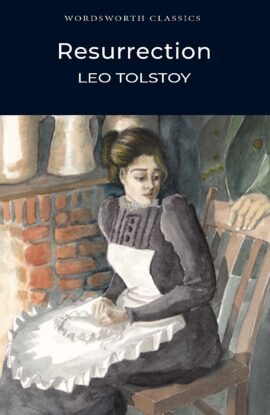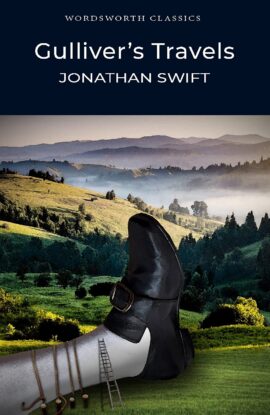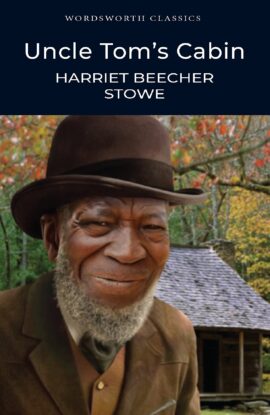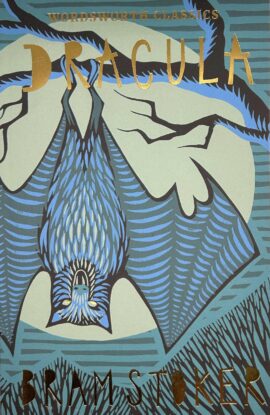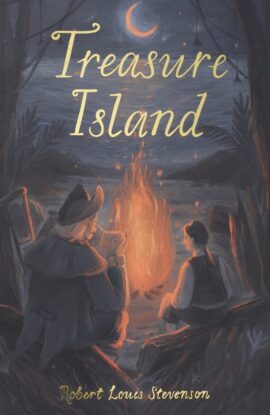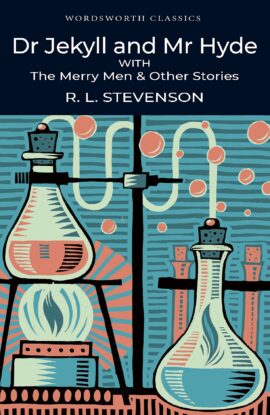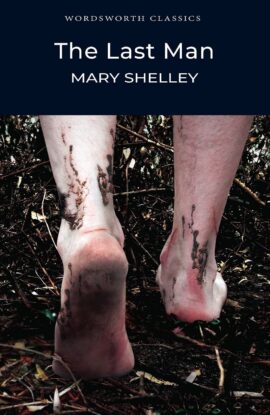Affichage de 5026–5050 sur 7284 résultatsTrié par prix décroissant
The Years / Between the Acts (Wordsworth Classics)
This volume brings together Virginia Woolf's last two novels, The Years (1937) which traces the lives of members of a dispersed middle-class family between 1880 and 1937, and Between the Acts (1941), an account of a village pageant in the summer preceding the Second World War which successfully interweaves comedy, satire and disturbing observation.Rewriting the traditional family saga and the pageant, these unsettling novels provide extraordinary critiques of Englishness and English identity while pursuing compelling existentialist and psychological themes such as the nature of time, memory, personal relationships and sexual desire. Their tightly constructed narratives enable the reader to experience the fragmented lives of their characters and the difficulties that they have in communicating with each other and even understanding themselves. Read together, these novels illuminate each other in ways that will engage both the student and the general reader.
A Room of One’s Own & the Voyage Out (Wordsworth Classics)
A Room of One's Own (1929) has become a classic feminist essay and perhaps Virginia Woolf's best known work: The Voyage Out (1915) is highly significant as her first novel. Both focus on the place of women within the power structures of modern society.The essay lays bare the woman artist's struggle for a voice, since throughout history she has been denied the social and economic independence assumed by men. Woolf's prescription is clear: if a woman is to find creative expression equal to a man's, she must have an independent income, and a room of her own. This is both an acute analysis and a spirited rallying cry: it remains surprisingly resonant and relevant in the 21st century.The novel explores these issues more personally, through the character of Rachel Vinrace, a young woman whose 'voyage out' to South America opens up powerful encounters with her fellow-travellers, men and women. As she begins to understand her place in the world, she finds the happiness of love, but also sees its brute power. Woolf has a sharp eye for the comedy of English manners in a foreign milieu: but the final undertow of the novel is tragic as, in some of her finest writing, she calls up the essential isolation of the human spirit.
Picture of Dorian Gray
Picture of Dorian Gray by Oscar Wilde. The Picture of Dorian Gray is Oscar Wilde's only novel, first published in 1890, is a brilliantly designed puzzle, intended to tease conventional minds with its exploration of the myriad interrelationships between art, life, and consequence. From its provocative Preface, challenging the reader to believe in 'art for art's sake', to its sensational conclusion, the story self-consciously experiments with the notion of sin as an element of design. Yet Wilde himself underestimated the consequences of his experiment, and its capacity to outrage the Victorian establishment. Its words returned to haunt him in his court appearances in 1895, and he later recalled the 'note of doom' which runs like 'a purple thread' through its carefully crafted prose.
The House of Mirth (Wordsworth Classics)
The House of Mirth by Edith Wharton. The House of Mirth tells the story of Lily Bart, aged 29, beautiful, impoverished and in need of a rich husband to safeguard her place in the social elite, and to support her expensive habits - her clothes, her charities and her gambling. Unwilling to marry without both love and money, Lily becomes vulnerable to the kind of gossip and slander which attach to a girl who has been on the marriage market for too long. Wharton charts the course of Lily's life, providing, along the way, a wider picture of a society in transition, a rapidly changing New York where the old certainties of manners, morals and family have disappeared and the individual has become an expendable commodity.
The Age of Innocence by Edith Wharton (Wordsworth Classics)
Blues Room Numbers Play Date: Pre-K (Nick, Jr.)
In these 'scientific romances' H. G. Wells sees the present reflected in the future and the future in the present. His aim is to provoke rather than predict. The Sleeper falls into a trance, waking up two centuries later as the richest man in a world of new technologies, power-greedy leaders, sensual elites, and brutalised industrial slaves. Arriving in the year 802,701, the Time-Traveller finds that humanity has evolved into two drastically different species: going farther still, he witnesses the ultimate fate of the solar system. The Chronic Argonauts, the original version of The Time Machine, pits a scientist with daring views of time and space against superstitious villagers. In all three works Wells laces vivid adventure stories with the latest ideas in biology and physics.
Spongebob Underwater Math Adventure: K-1 (Nick, Jr.)
With an Introduction and Notes by Dr Emily Alder, Lecturer in Literature and Culture at Edinburgh Napier University'Each time I dip a living creature into the bath of burning pain, I say: this time I will burn out all the animal, this time I will make a rational creature of my own!' declares Doctor Moreau to hapless narrator Edward Prendick.Moreau's highly controversial methods and ambitions conflict with the religious, moral and scientific norms of his day and Wells later called The Island of Doctor Moreau 'a youthful exercise in blasphemy'. Today his vivid depictions of the Beast People still strike modern readers with an uncanny glimpse of the animal in the human, while the behaviour of humans leave us wondering who is the most monstrous after all.This volume unites four of Wells' liveliest and most engaging tales of the strange evolution and behaviour of animals - including human beings. The Island of Doctor Moreau is followed by three fantastic yet chillingly plausible short stories of human-animal encounters. The Empire of the Ants is a darkly humorous account of intelligent Amazonian ants threatening to displace humans as 'the lords of the future and masters of the earth'. In The Sea Raiders, the south coast of England is terrorized by an unwelcome visit from deep-sea predator Haploteuthis ferox, while AEpyornis Island provides a marooned egg collector with an unusual companion.
Ben Hur
Ben-Hur: A Tale of the Christ by Lew Wallace. An immediate best-seller on publication, Ben Hur remains a dazzling achievement by any standards. A thoroughly exhilarating tale of betrayal, revenge and salvation, it is the only novel that ranks with Uncle Tom's Cabin as a genuine American folk possession. Wallace writes with a freshness and immediacy that brings every action-packed scene to life and illuminates the geography, ethnology and customs of the ancient world.
Candide and Other Works (Wordsworth Classics)
With an Introduction and Notes by James Fowler, Senior Lecturer in French, University of Kent Voltaire is one of the three greatest French writers of the eighteenth century. He fought against religious persecution, bigotry and injustice throughout his life, and is one of the thinkers who prepared the way for the French Revolution. This volume contains: Zadig (1748), the story of a young man who becomes king of Babylon: Candide (1759), Voltaire's most famous tale of all: and (in a new translation by Editor James Fowler) The Ingenu (1767), in which the hero, raised by Huron Indians, discovers the ways of Europe. The heroes of these tales are young, handsome, talented, and naive. All three are animated by Voltaire's sparkling wit, but also by his dark satire of ancient regime society. The volume closes with a new translation of Nanine, Voltaire's three-act comedy which was seen, first as dangerously meritocratic, then as anti-revolutionary. The hero falls in love with a servant girl: but will he overcome society's prejudice and marry her?
Twenty Thousand Leagues Under the Sea
20,000 Leagues Under the Sea by Jules Verne. Twenty Thousand Leagues Under the Sea is a classic science fiction novel by French writer Jules Verne published in 1870. It tells the story of Captain Nemo and his submarine Nautilus, as seen from the perspective of Professor Pierre Aronnax after he, his servant Conseil, and Canadian whaler Ned Land wash up on their ship. On the Nautilus, the three embark on a journey which has them going all around the world, under the sea.
From the Earth to the Moon / Around the Moon (Wordsworth Classics)
With an Introduction and Notes by Alex Dolby. JULES VERNE (1828-1905) was internationally famous as the author of novels based on extraordinary voyages. His visionary use of new travel technologies inspired his readers to look to the industrial future rather than the remote past for their dreams of adventure. The popularity of his novels led directly to modern science fiction. In From the Earth to the Moon and Around the Moon, Jules Verne turned the ancient fantasy of space flight into a believable technological possibility an engineering dream for the industrial age. Directly inspired by Verne s story, enthusiasts worked successfully at overcoming the practical difficulties, and within a century, human beings did indeed fly to the Moon. Curiously, however, Verne is unlikely to have thought it possible that a manned projectile could actually be fired out of a giant cannon, rising higher than the Moon, swinging around it, and then landing safely back on Earth. He had used the science of
Museum Collection of Claude Monet
Around the World in Eighty Days (1873) relates the hair-raising journey made as a wager by the Victorian gentleman Phileas Fogg, who succeeds - but only just! - in circling the globe within eighty days. The dour Fogg's obsession with his timetable is complemented by the dynamism and versatility of his French manservant, Passepartout, whose talent for getting into scrapes brings colour and suspense to the race against time. Five Weeks in a Balloon (1863) was Verne's first novel. It documents an apocryphal jaunt across the continent of Africa in a hydrogen balloon designed by the omniscient, imperturbable and ever capable Dr Fergusson, the prototype of the Vernian adventurer.
The Mysterious Island (Wordsworth Classics)
The Mysterious Island by Jules Verne. With an Introduction by Alex Dolby Jules Verne (1828-1905) is internationally famous as the author of a distinctive series of adventure stories describing new travel technologies which opened up the world and provided means to escape from it. The collective enthusiasm of generations of readers of his extraordinary voyages was a key factor in the rise of modern science fiction. In The Mysterious Island a group of men escape imprisonment during the American Civil War by stealing a balloon. Blown across the world, they are air-wrecked on a remote desert island. In a manner reminiscent of Robinson Crusoe, the men apply their scientific knowledge and technical skill to exploit the island s bountiful resources, eventually constructing a sophisticated society in miniature. The book is also an intriguing mystery story, for the island has a secret...
The Innocents Abroad (Wordsworth Classics)
The Innocents Abroad by Mark Twain. With an Introduction by Stuart Hutchinson. Who could read the programme for the excursion without longing to make one of the party? So Mark Twain acclaims his voyage from New York City to Europe and the Holy Land in June 1867. His adventures produced The Innocents Abroad, a book so funny and provocative it made him an international star for the rest of his life. He was making his first responses to the Old World - to Paris, Milan, Florence, Venice, Pompeii, Constantinople, Sebastopol, Balaklava, Damascus, Jerusalem, Nazareth, and Bethlehem. For the first time he was seeing the great paintings and sculptures of the Old Masters . He responded with wonder and amazement, but also with exasperation, irritation, disbelief. Above all he displayed the great energy of his humour, more explosive for us now than for his beguiled contemporaries.
Fathers and Sons (Wordsworth Classics)
Fathers and Sons by Ivan Sergeevich Turgenev. Fathers and Sons is one of the greatest nineteenth century Russian novels, and has long been acclaimed as Turgenev's finest work. It is a political novel set in a domestic context, with a universal theme, the generational divide between fathers and sons. Set in 1859 at the moment when the Russian autocratic state began to move hesitantly towards social and political reform, the novel explores the conflict between the liberal-minded fathers of Russian reformist sympathies and their free-thinking intellectual sons whose revolutionary ideology threatened the stability of the state. At its centre is Evgeny Bazorov, a strong-willed antagonist of all forms of social orthodoxy who proclaims himself a nihilist and believes in the need to overthrow all the institutions of the state. As the novel develops Bazarov's political ambitions become fatally meshed with emotional and private concerns, and his end is a tragic failure. The novel caused a bitter furore on its publication in 1862, and this, a year later, drove Turgenev from Russia.
Way We Live Now
The Way We Live Now by Anthony Trollope. The tough-mindedness of the social satire in and its air of palpable integrity gives this novel a special place in Anthony Trollope's Literary career. Trollope paints a picture as panoramic as his title promises, of the life of 1870s London, the loves of those drawn to and through the city, and the career of Augustus Melmotte. Melmotte is one of the Victorian novel's greatest and strangest creations, and is an achievement undimmed by the passage of time. Trollope's 'Now' might, in the twenty-first century, look like some distant disenchanted 'Then', but this is still the yesterday which we must understand in order to make proper sense of our today.
Resurrection (Wordsworth Classics)
Resurrection by Leo Tolstoy This powerful novel, Tolstoy's third major masterpiece, after War and Peace and Anna Karenina, begins with a courtroom drama (the finest in Russian literature) all the more stunning for being based on a real-life event. Dmitri Nekhlyudov, called to jury service, is astonished to see in the dock, charged with murder, a young woman whom he once seduced, propelling her into prostitution. She is found guilty on a technicality, and he determines to overturn the verdict. This pitches him into a hellish labyrinth of Russian courts, prisons and bureaucracy, in which the author loses no opportunity for satire and bitter criticism of a state system (not confined to that country) of cruelty and injustice. This is Dickens for grown-ups, involving a hundred characters, Crime and Punishment brought forward half a century. With unforgettable set-pieces of sexual passion, conflict and social injustice, Resurrection proceeds from brothel to court-room, stinking cells to offices of state, luxury apartments to filthy life in Siberia. The ultimate crisis of moral responsibility embroils not only the famous author and his hero, but also you and me. Can we help resolve the eternal issues of law and imprisonment?
Gulliver’s Travels
Gulliver's Travels by Jonathan SwiftJonathan Swift's classic satirical narrative was first published in 1726, seven years after Defoe's Robinson Crusoe (one of its few rivals in fame and breadth of appeal). As a parody travel-memoir it reports on extraordinary lands and societies, whose names have entered the English language: notably the minute inhabitants of Lilliput, the giants of Brobdingnag, and the Yahoos in Houyhnhnmland, where talking horses are the dominant species. It spares no vested interest from its irreverent wit, and its attack on political and financial corruption, as well as abuses in science, continue to resonate in our own times.
Uncle Tom’s Cabin (Wordsworth Classics)
Editedand with an Introduction and Notes by Dr Keith Carabine. University of Kent at Canterbury.Uncle Tom's Cabin is the most popular, influential and controversial book written by an American. Stowe's rich, panoramic novel passionately dramatises why the whole of America is implicated in and responsible for the sin of slavery, and resoundingly concludes that only 'repentance, justice and mercy' will prevent the onset of 'the wrath of Almighty God!'.The novel gave such a terrific impetus to the crusade for the abolition of slavery that President Lincoln half-jokingly greeted Stowe as'the little lady' who started the great Civil War. As Keith Carabine argues in his lively and provocative Introduction, the novel immediately provoked a storm of competing and contradictory responses among Northern and Southern readers, moderate and radical abolitionist groups, blacks and women, with regard to issues of form, genre, politics, religion, race and gender, that are still of great interest because they anticipate the concerns that vex and divide modern readers and critical constituencies.
[ DRACULA (WADSWORTH COLLECTION) – GREENLIGHT ] By Stoker, Bram ( Author) 1999 [ Paperback ]
Dracula by Bram Stoker“Welcome to my house! Enter freely and of your own will!” He made no motion of stepping to meet me, but stood like a statue, as though his gesture of welcome had fixed him into stone. The instant, however, that I had stepped over the threshold, he moved impulsively forward, and holding out his hand grasped mine with a strength which made me wince, an effect which was not lessened by the fact that it seemed as cold as ice―more like the hand of a dead than a living man.
Treasure Island (Wordsworth Exclusive Collection)
Treasure Island by Robert Louis Stevenson "Fifteen men on the dead man's chest-Yo-ho-ho and a bottle of rum!" Treasure Island is a tale of pirates and villains, maps, treasure and shipwreck, and is perhaps the best adventure story ever written. When young Jim Hawkins finds a packet in Captain Flint's sea chest, he could not know that the map inside it would lead him to unimaginable treasure. Shipping as cabin boy on the Hispaniola, he sails with Squire Trelawney, Captain Smollett, Dr Livesey, the sinister Long John Silver and a frightening crew to Treasure Island. There, mutiny, murder and mayhem lead to a thrilling climax.
Treasure Island (Wordsworth Classics)
Treasure Island by Robert Louis Stevenson. 'Fifteen men on the dead man's chest-Yo-ho-ho and a bottle of rum!' Treasure Island is a tale of pirates and villains, maps, treasure and shipwreck, and is perhaps the best adventure story ever written. When young Jim Hawkins finds a packet in Captain Flint's sea chest, he could not know that the map inside it would lead him to unimaginable treasure. Shipping as cabin boy on the Hispaniola, he sails with Squire Trelawney, Captain Smollett, Dr Livesey, the sinister Long John Silver and a frightening crew to Treasure Island. There, mutiny, murder and mayhem lead to a thrilling climax.
Dr Jekyll and Mr Hyde (Wordsworth Classics)
Dr. Jekyll and Mr. Hyde by Robert Louis Stevenson. Introduction and Notes by Dr Tim Middleton, Head of English Studies, University of Ripon and York In seeking to discover his inner self, the brilliant Dr Jekyll discovers a monster. First published to critical acclaim in 1886, this mesmerising thriller is a terrifying study of the duality of man's nature. Also included in this volume is Stevenson's 1887 collection of short stories, The Merry Men and Other Tales and Fables. The Merry Men is a gripping Highland tale of shipwrecks and madness: Markheim, the sinister study of the mind of a murderer: Thrawn Janet, a spine-chilling tale of demonic possession: Olalla a study of degeneration and incipient vampirism in the Spanish mountains: Will O'the Mill, a thought-provoking fable about a mountain inn-keeper: and The Treasure of Franchard, a study of French bourgeois life.
The Last Man (Wordsworth Classics)
The Last Man by Mary Wollstonecraft Shelley. With an Introduction and Notes by Dr Pamela Bickley, The Godolphin and Latymer School, formerly of Royal Holloway, University of London The Last Man is Mary Shelley's apocalyptic fantasy of the end of human civilisation. Set in the late twenty-first century, the novel unfolds a sombre and pessimistic vision of mankind confronting inevitable destruction. Interwoven with her futuristic theme, Mary Shelley incorporates idealised portraits of Shelley and Byron, yet rejects Romanticism and its faith in art and nature. Mary Wollstonecraft Shelley (1797-1851) was the only daughter of Mary Wollstonecraft, author of Vindication of the Rights of Woman, and the radical philosopher William Godwin. Her mother died ten days after her birth and the young child was educated through contact with her father's intellectual circle and her own reading. She met Percy Bysshe Shelley in 1812: they eloped in July 1814. In the summer of 1816 she began her first and most famous novel, Frankenstein. Three of her children died in early infancy and in 1822 her husband was drowned. Mary returned to England with her surviving son and wrote novels, short stories and accounts of her travels: she was the first editor of P.B.Shelley's poetry and verse.
Frankenstein (Wordsworth Classics)
Frankenstein by Mary Shelley. Conceived from a nightmare, Frankenstein, is the deeply disturbing story of a monstrous creation which has terrified and chilled readers since its first publication in 1818. The novel has thus seared its way into the popular imagination while establishing itself as one of the pioneering works of modern science fiction.












